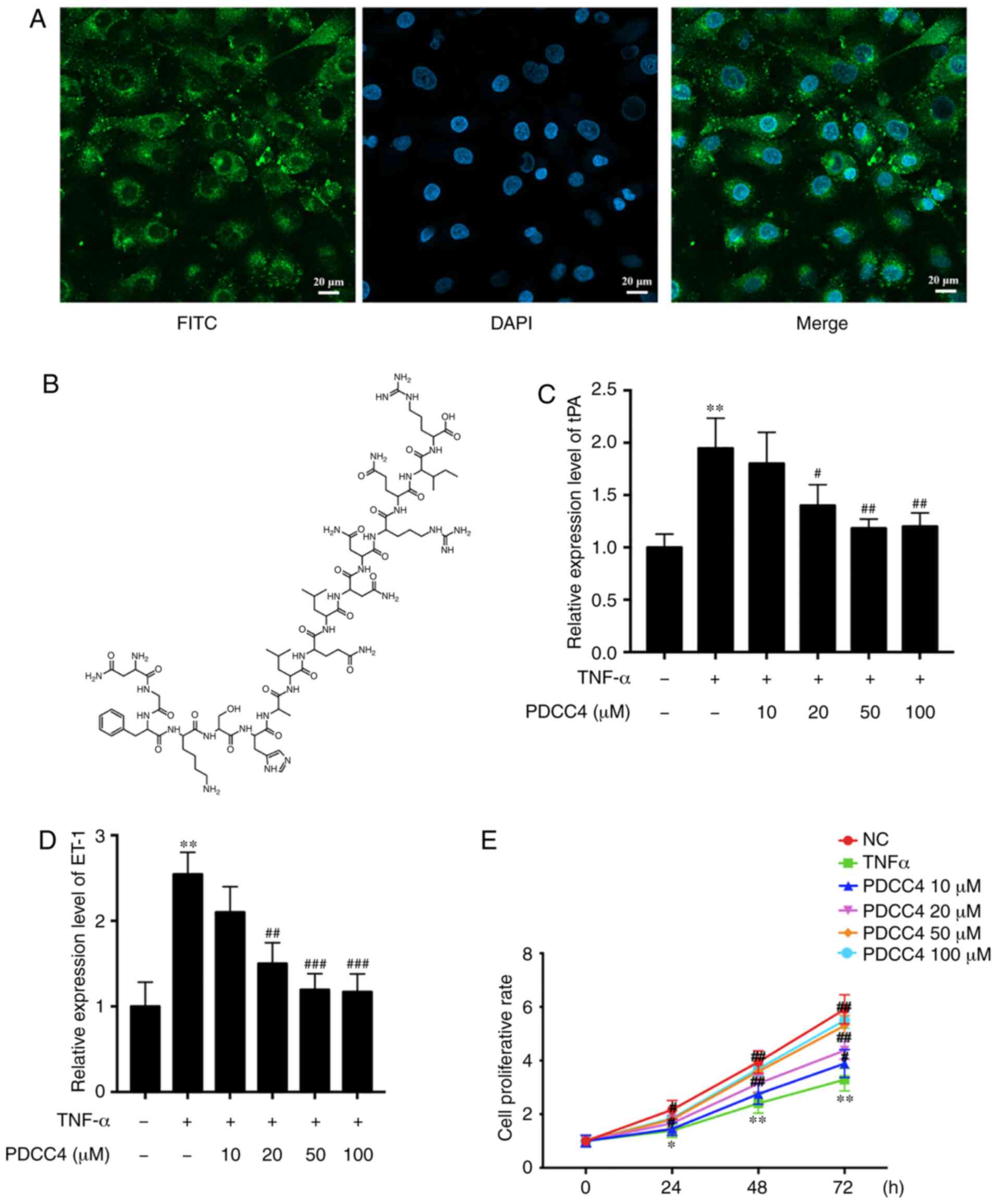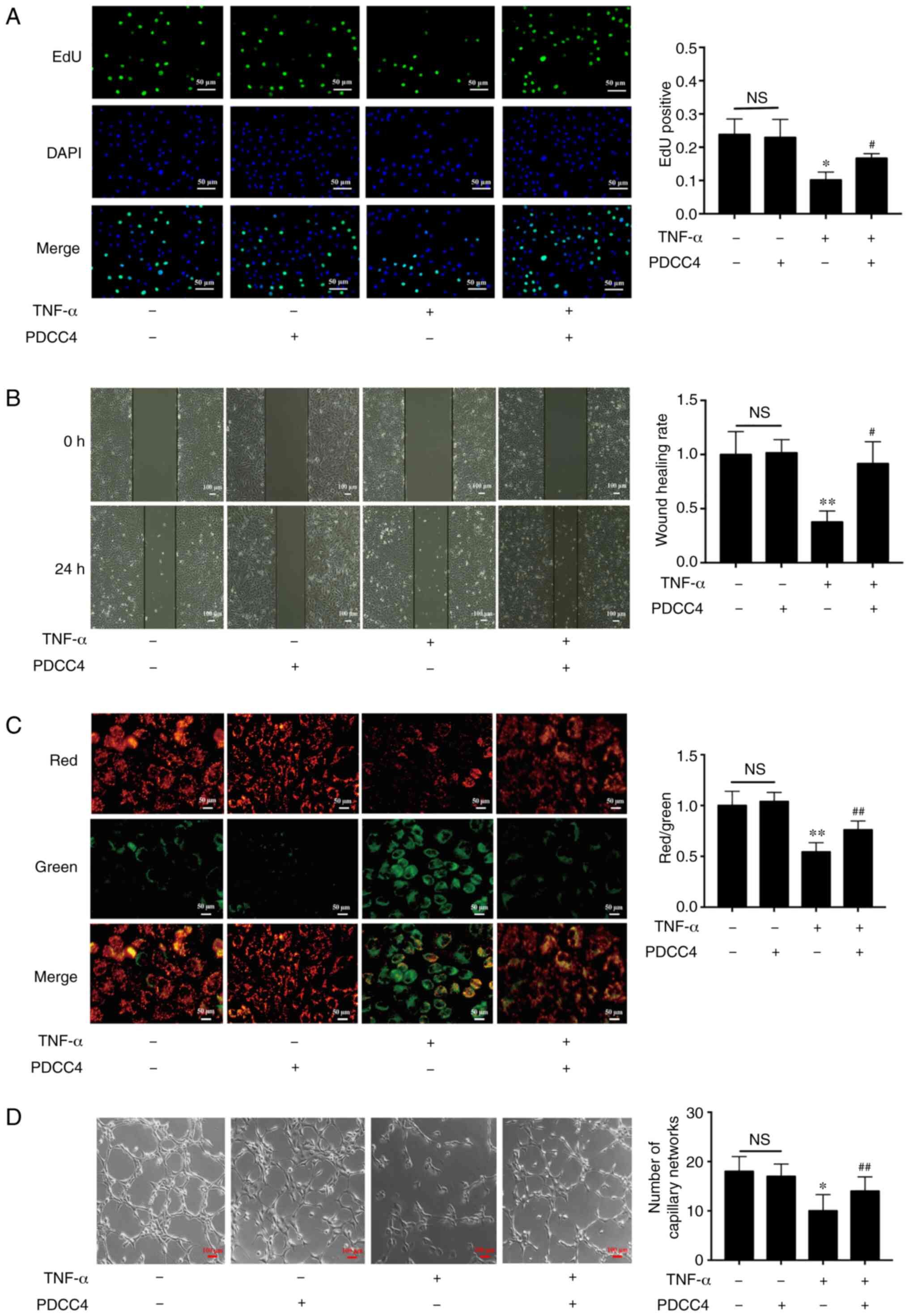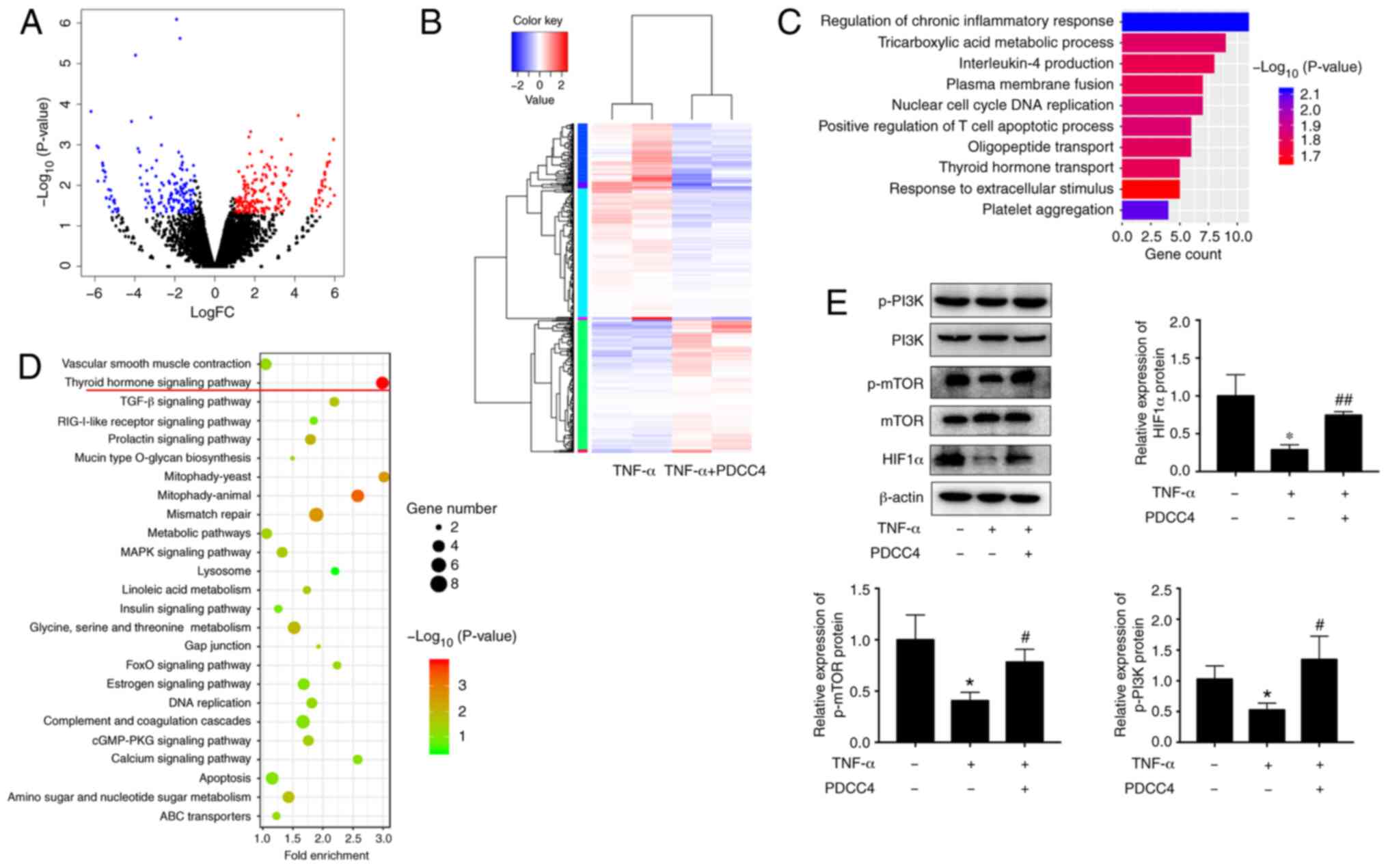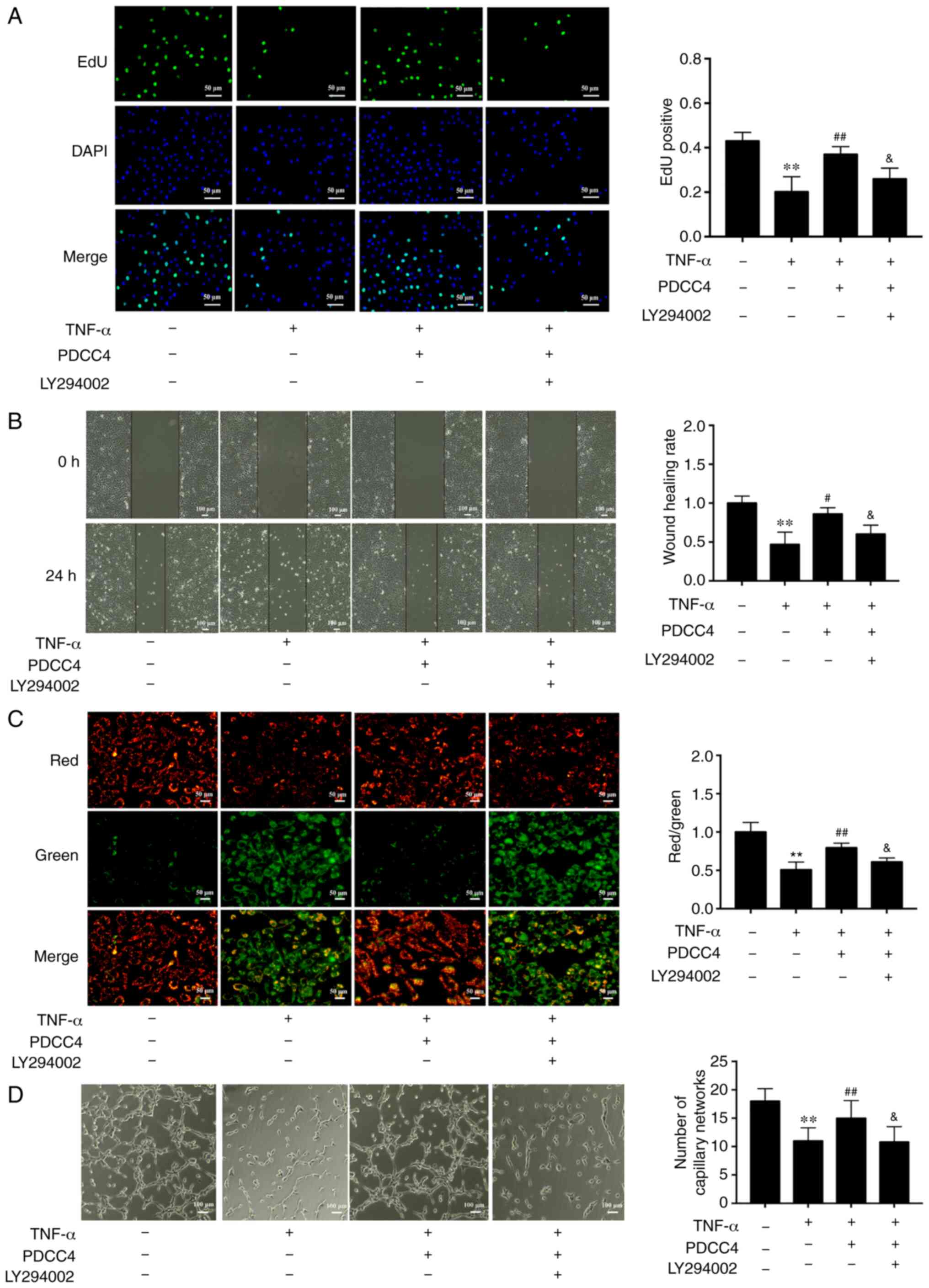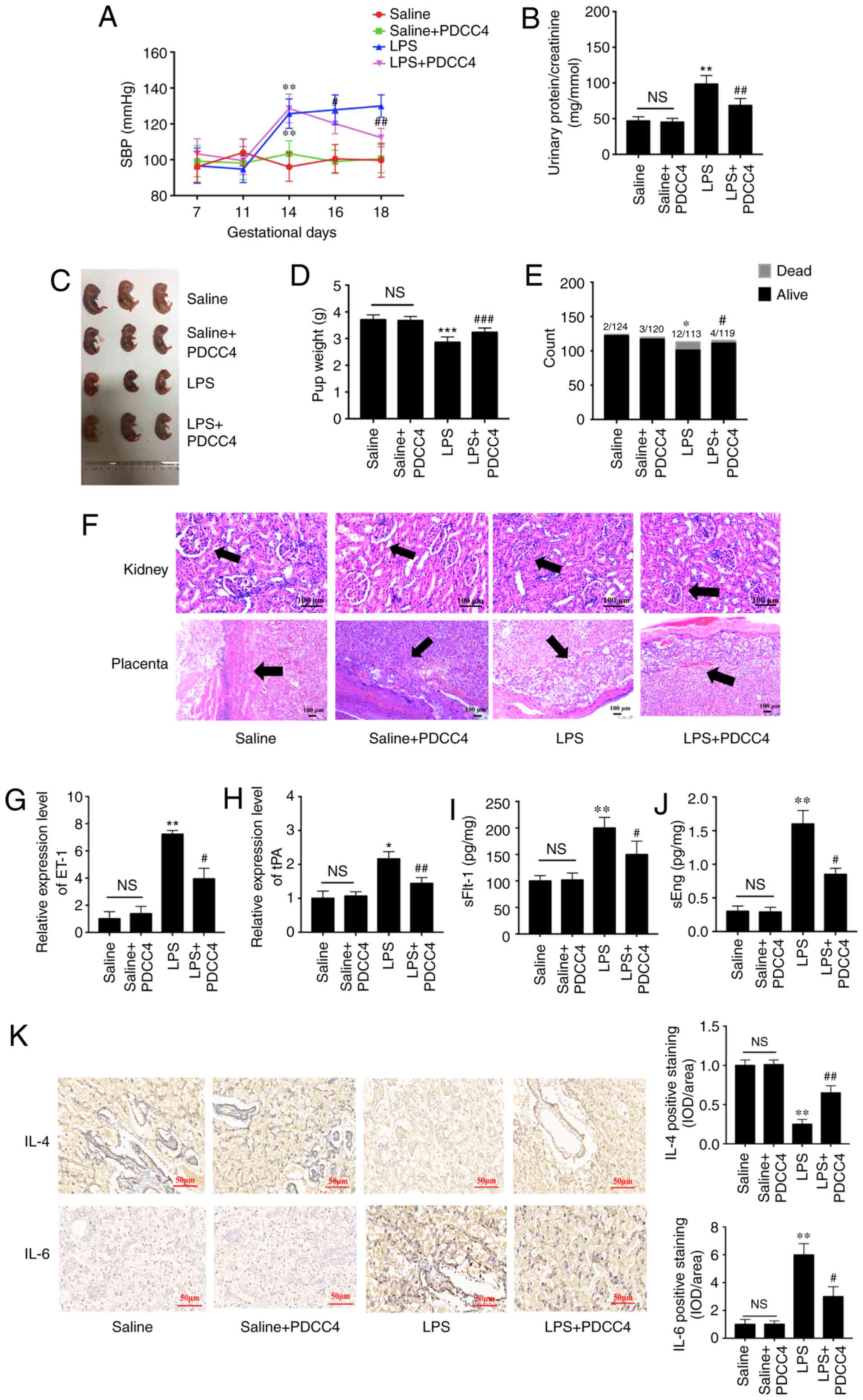|
1
|
Mol BWJ, Roberts CT, Thangaratinam S,
Magee LA, de Groot CJM and Hofmeyr GJ: Preeclampsia. Lancet.
387:999–1011. 2016. View Article : Google Scholar
|
|
2
|
Khan KS, Wojdyla D, Say L, Gulmezoglu AM
and Van Look PF: WHO analysis of causes of maternal death: A
systematic review. Lancet. 367:1066–1074. 2006. View Article : Google Scholar : PubMed/NCBI
|
|
3
|
Duley L: The global impact of preeclampsia
and eclampsia. Semin Perinatol. 33:130–137. 2009. View Article : Google Scholar : PubMed/NCBI
|
|
4
|
Rana S, Lemoine E, Granger JP and
Karumanchi SA: Preeclampsia: Pathophysiology, challenges, and
perspectives. Circ Res. 124:1094–1112. 2019. View Article : Google Scholar : PubMed/NCBI
|
|
5
|
Wirka RC and Quertermous T: Circulating
peptide prevents preeclampsia. Science. 357:643–644. 2017.
View Article : Google Scholar : PubMed/NCBI
|
|
6
|
Ghulmiyyah L and Sibai B: Maternal
mortality from preeclampsia/eclampsia. Semin Perinatol. 36:56–59.
2012. View Article : Google Scholar : PubMed/NCBI
|
|
7
|
Rolnik DL, Wright D, Poon LC, O'Gorman N,
Syngelaki A, de Paco Matallana C, Akolekar R, Cicero S, Janga D,
Singh M, et al: Aspirin versus placebo in pregnancies at high risk
for preterm preeclampsia. N Engl J Med. 377:613–622. 2017.
View Article : Google Scholar : PubMed/NCBI
|
|
8
|
LeFevre ML; U.S. Preventive Services Task
Force: Low-dose aspirin use for the prevention of morbidity and
mortality from preeclampsia: U.S. Preventive Services Task Force
recommendation statement. Ann Intern Med. 161:819–826. 2014.
View Article : Google Scholar : PubMed/NCBI
|
|
9
|
Duley L, Meher S and Abalos E: Management
of preeclampsia. BMJ. 332:463–468. 2006. View Article : Google Scholar : PubMed/NCBI
|
|
10
|
Hossain N, Schatz F and Paidas MJ: Heparin
and maternal fetal interface: Why should it work to prevent
pregnancy complications? Thromb Res. 124:653–655. 2009. View Article : Google Scholar : PubMed/NCBI
|
|
11
|
Lowe SA, Brown MA, Dekker GA, Gatt S,
McLintock CK, McMahon LP, Mangos G, Moore MP, Muller P, Paech M, et
al: Guidelines for the management of hypertensive disorders of
pregnancy 2008. Aust N Z J Obstet Gynaecol. 49:242–246. 2009.
View Article : Google Scholar : PubMed/NCBI
|
|
12
|
Pijnenborg R, Vercruysse L and Hanssens M:
The uterine spiral arteries in human pregnancy: Facts and
controversies. Placenta. 27:939–958. 2006. View Article : Google Scholar : PubMed/NCBI
|
|
13
|
Jeyabalan A: Epidemiology of preeclampsia:
Impact of obesity. Nutr Rev. 71(Suppl 1): S18–S25. 2013. View Article : Google Scholar : PubMed/NCBI
|
|
14
|
Powe CE, Levine RJ and Karumanchi SA:
Preeclampsia, a disease of the maternal endothelium: The role of
antiangiogenic factors and implications for later cardiovascular
disease. Circulation. 123:2856–2869. 2011. View Article : Google Scholar : PubMed/NCBI
|
|
15
|
Young BC, Levine RJ and Karumanchi SA:
Pathogenesis of preeclampsia. Annu Rev Pathol. 5:173–192. 2010.
View Article : Google Scholar : PubMed/NCBI
|
|
16
|
Roberts JM, Taylor RN, Musci TJ, Rodgers
GM, Hubel CA and McLaughlin MK: Preeclampsia: An endothelial cell
disorder. Am J Obstet Gynecol. 161:1200–1204. 1989. View Article : Google Scholar : PubMed/NCBI
|
|
17
|
Brownfoot FC, Hastie R, Hannan NJ, Cannon
P, Tuohey L, Parry LJ, Senadheera S, Illanes SE, Kaitu'u-Lino TJ
and Tong S: Metformin as a prevention and treatment for
preeclampsia: Effects on soluble fms-like tyrosine kinase 1 and
soluble endoglin secretion and endothelial dysfunction. Am J Obstet
Gynecol. 214:356.e1–356.e15. 2016. View Article : Google Scholar
|
|
18
|
Papo N and Shai Y: Host defense peptides
as new weapons in cancer treatment. Cell Mol Life Sci. 62:784–790.
2005. View Article : Google Scholar : PubMed/NCBI
|
|
19
|
Ellerby HM, Arap W, Ellerby LM, Kain R,
Andrusiak R, Rio GD, Krajewski S, Lombardo CR, Rao R, Ruoslahti E,
et al: Anti-cancer activity of targeted pro-apoptotic peptides. Nat
Med. 5:1032–1038. 1999. View
Article : Google Scholar : PubMed/NCBI
|
|
20
|
Kim SJ, Xiao J, Wan J, Cohen P and Yen K:
Mitochondrially derived peptides as novel regulators of metabolism.
J Physiol. 595:6613–6621. 2017. View Article : Google Scholar : PubMed/NCBI
|
|
21
|
Petkov V, Mosgoeller W, Ziesche R, Raderer
M, Stiebellehner L, Vonbank K, Funk GC, Hamilton G, Novotny C,
Burian B and Block LH: Vasoactive intestinal peptide as a new drug
for treatment of primary pulmonary hypertension. J Clin Invest.
111:1339–1346. 2003. View Article : Google Scholar : PubMed/NCBI
|
|
22
|
Ho L, van Dijk M, Chye STJ, Messerschmidt
DM, Chng SC, Ong S, Yi LK, Boussata S, Goh GH, Afink GB, et al:
ELABELA deficiency promotes preeclampsia and cardiovascular
malformations in mice. Science. 357:707–713. 2017. View Article : Google Scholar : PubMed/NCBI
|
|
23
|
Jacobsen LV, Flint A, Olsen AK and
Ingwersen SH: Liraglutide in type 2 diabetes mellitus: Clinical
pharmacokinetics and pharmacodynamics. Clin Pharmacokinet.
55:657–672. 2016. View Article : Google Scholar :
|
|
24
|
Sleeman A and Clements JN: Abaloparatide:
A new pharmacological option for osteoporosis. Am J Health Syst
Pharm. 76:130–135. 2019. View Article : Google Scholar : PubMed/NCBI
|
|
25
|
Dai X, Song X, Rui C, Meng L, Xue X, Ding
H, Shen R, Li J, Li J, Lu Y and Long W: Peptidome analysis of human
serum from normal and preeclamptic pregnancies. J Cell Biochem.
118:4341–4348. 2017. View Article : Google Scholar : PubMed/NCBI
|
|
26
|
Chen TG, Zhong ZY, Sun GF, Zhou YX and
Zhao Y: Effects of tumour necrosis factor-alpha on activity and
nitric oxide synthase of endothelial progenitor cells from
peripheral blood. Cell Prolif. 44:352–359. 2011. View Article : Google Scholar : PubMed/NCBI
|
|
27
|
Gerhardt S, König V, Doll M,
Hailemariam-Jahn T, Hrgovic I, Zöller N, Kaufmann R, Kippenberger S
and Meissner M: Dimethylfumarate protects against TNF-α-induced
secretion of inflammatory cytokines in human endothelial cells. J
Inflamm (Lond). 12:492015. View Article : Google Scholar
|
|
28
|
Fratantonio D, Speciale A, Molonia MS,
Bashllari R, Palumbo M, Saija A, Cimino F, Monastra G and Virgili
F: Alpha-lipoic acid, but not di-hydrolipoic acid, activates Nrf2
response in primary human umbilical-vein endothelial cells and
protects against TNF-α induced endothelium dysfunction. Arch
Biochem Biophys. 655:18–25. 2018. View Article : Google Scholar : PubMed/NCBI
|
|
29
|
Zeng RJ, Zheng CW, Gu JE, Zhang HX, Xie L,
Xu LY and Li EM: RAC1 inhibition reverses cisplatin resistance in
esophageal squamous cell carcinoma and induces downregulation of
glycolytic enzymes. Mol Oncol. 13:2010–2030. 2019. View Article : Google Scholar : PubMed/NCBI
|
|
30
|
Cai S, Zhu Q, Guo C, Yuan R, Zhang X, Nie
Y, Chen L, Fang Y, Chen K, Zhang J, et al: MLL1 promotes myogenesis
by epigenetically regulating Myf5. Cell Prolif. 53:e127442020.
View Article : Google Scholar :
|
|
31
|
Sun Q, Li Q and Xie F: LncRNA-MALAT1
regulates proliferation and apoptosis of ovarian cancer cells by
targeting miR-503-5p. Onco Targets Ther. 12:6297–6307. 2019.
View Article : Google Scholar : PubMed/NCBI
|
|
32
|
Lv Y, Lu X, Li C, Fan Y, Ji X, Long W,
Meng L, Wu L, Wang L, Lv M and Ding H: miR-145-5p promotes
trophoblast cell growth and invasion by targeting FLT1. Life Sci.
239:1170082019. View Article : Google Scholar : PubMed/NCBI
|
|
33
|
Lip SV, Boekschoten MV, Hooiveld GJ, van
Pampus MG, Scherjon SA, Plösch T and Faas MM: Early-onset
preeclampsia, plasma microRNAs, and endothelial cell function. Am J
Obstet Gynecol. 222:497.e1–497.e12. 2020. View Article : Google Scholar
|
|
34
|
Liu L, Bi N, Wu L, Ding X, Men Y, Zhou W,
Li L, Zhang W, Shi S, Song Y and Wang L: MicroRNA-29c functions as
a tumor suppressor by targeting VEGFA in lung adenocarcinoma. Mol
Cancer. 16:502017. View Article : Google Scholar : PubMed/NCBI
|
|
35
|
Wang C, Tao W, Wang Y, Bikow J, Lu B,
Keating A, Verma S, Parker TG, Han R and Wen XY: Rosuvastatin,
identified from a zebrafish chemical genetic screen for
antiangiogenic compounds, suppresses the growth of prostate cancer.
Eur Urol. 58:418–426. 2010. View Article : Google Scholar : PubMed/NCBI
|
|
36
|
Chen J, Zhang W, Xu Q, Zhang J, Chen W, Xu
Z, Li C, Wang Z, Zhang Y, Zhen Y, et al: Ang-(17) protects HUVECs
from high glucose-induced injury and inflammation via inhibition of
the JAK2/STAT3 pathway. Int J Mol Med. 41:2865–2878.
2018.PubMed/NCBI
|
|
37
|
Jin J, Qiu S, Wang P, Liang X, Huang F, Wu
H, Zhang B, Zhang W, Tian X, Xu R, et al: Cardamonin inhibits
breast cancer growth by repressing HIF-1α-dependent metabolic
reprogramming. J Exp Clin Cancer Res. 38:3772019. View Article : Google Scholar
|
|
38
|
Mi L, Zhang Y, Xu Y, Zheng X, Zhang X,
Wang Z, Xue M and Jin X: HMGB1/RAGE pro-inflammatory axis promotes
vascular endothelial cell apoptosis in limb ischemia/reperfusion
injury. Biomed Pharmacother. 116:1090052019. View Article : Google Scholar : PubMed/NCBI
|
|
39
|
Xiang Y, Yao X, Wang X, Zhao H, Zou H,
Wang L and Zhang QX: Houshiheisan promotes angiogenesis via
HIF-1α/VEGF and SDF-1/CXCR4 pathways: In vivo and in vitro. Biosci
Rep. 39:BSR201910062019. View Article : Google Scholar
|
|
40
|
Liu Y, Yang J, Bao J, Li X, Ye A, Zhang G
and Liu H: Activation of the cholinergic anti-inflammatory pathway
by nicotine ameliorates lipopolysaccharide-induced
preeclampsia-like symptoms in pregnant rats. Placenta. 49:23–32.
2017. View Article : Google Scholar
|
|
41
|
National Research Council Committee for
the Update of the Guide for the Care and use of Laboratory Animals:
The National Academies Collection: Reports funded by National
Institutes of Health. Guide for the Care and Use of Laboratory
Animals. 8th edition. National Academies Press; Washington, DC:
2011
|
|
42
|
Shu W, Li H, Gong H, Zhang M, Niu X, Ma Y,
Zhang X, Cai W, Yang G, Wei M, et al: Evaluation of blood vessel
injury, oxidative stress and circulating inflammatory factors in an
L-NAME-induced preeclampsia-like rat model. Exp Ther Med.
16:585–594. 2018.PubMed/NCBI
|
|
43
|
Yalamati P, Bhongir AV, Karra M and Beedu
SR: comparative analysis of urinary total proteins by bicinchoninic
acid and pyrogallol red molybdate methods. J Clin Diagn Res.
9:Bc01–04. 2015.PubMed/NCBI
|
|
44
|
Lai WS and Ding YL: GNG7 silencing
promotes the proliferation and differentiation of placental
cytotrophoblasts in preeclampsia rats through activation of the
mTOR signaling pathway. Int J Mol Med. 43:1939–1950.
2019.PubMed/NCBI
|
|
45
|
Feldman AT and Wolfe D: Tissue processing
and hematoxylin and eosin staining. Methods Mol Biol. 1180:31–43.
2014. View Article : Google Scholar : PubMed/NCBI
|
|
46
|
Matsumoto K, Arao T, Tanaka K, Kaneda H,
Kudo K, Fujita Y, Tamura D, Aomatsu K, Tamura T, Yamada Y, et al:
mTOR signal and hypoxia-inducible factor-1 alpha regulate CD133
expression in cancer cells. Cancer Res. 69:7160–7164. 2009.
View Article : Google Scholar : PubMed/NCBI
|
|
47
|
Yuan Y, Shan N, Tan B, Deng Q, Liu Y, Wang
H, Luo X, He C, Luo X, Zhang H, et al: SRC-3 plays a critical role
in human umbilical vein endothelial cells by regulating the
PI3K/Akt/mTOR pathway in preeclampsia. Reprod Sci. 25:748–758.
2018. View Article : Google Scholar
|
|
48
|
Livak KJ and Schmittgen TD: Analysis of
relative gene expression data using real-time quantitative PCR and
the 2(-Delta Delta C(T)) method. Methods. 25:402–408. 2001.
View Article : Google Scholar
|
|
49
|
Jonsson Y, Rubèr M, Matthiesen L, Berg G,
Nieminen K, Sharma S, Ernerudh J and Ekerfelt C: Cytokine mapping
of sera from women with preeclampsia and normal pregnancies. J
Reprod Immunol. 70:83–91. 2006. View Article : Google Scholar : PubMed/NCBI
|
|
50
|
Chen J, Yue C, Xu J, Zhan Y, Zhao H, Li Y
and Ye Y: Downregulation of receptor tyrosine kinase-like orphan
receptor 1 in preeclampsia placenta inhibits human trophoblast cell
proliferation, migration, and invasion by PI3K/AKT/mTOR pathway
accommodation. Placenta. 82:17–24. 2019. View Article : Google Scholar : PubMed/NCBI
|
|
51
|
Harati-Sadegh M, Kohan L, Teimoori B,
Mehrabani M and Salimi S: The association of the placental
Hypoxia-inducible factor1-α polymorphisms and HIF1-α mRNA
expression with preeclampsia. Placenta. 67:31–37. 2018. View Article : Google Scholar : PubMed/NCBI
|
|
52
|
Grotegut CA: Prevention of preeclampsia. J
Clin Invest. 126:4396–4398. 2016. View Article : Google Scholar : PubMed/NCBI
|
|
53
|
Cohen JM, Kramer MS, Platt RW, Basso O,
Evans RW and Kahn SR: The association between maternal antioxidant
levels in midpregnancy and preeclampsia. Am J Obstet Gynecol. 213.
pp. 695.e1–613. 2015, View Article : Google Scholar
|
|
54
|
Bahado-Singh RO, Syngelaki A, Akolekar R,
Mandal R, Bjondahl TC, Han B, Dong E, Bauer S, Alpay-Savasan Z,
Graham S, et al: Validation of metabolomic models for prediction of
early-onset preeclampsia. Am J Obstet Gynecol. 213:530.e1–530.e10.
2015. View Article : Google Scholar
|
|
55
|
Ray JG, Booth GL, Alter DA and Vermeulen
MJ: Prognosis after maternal placental events and
revascularization: PAMPER study. Am J Obstet Gynecol.
214:106.e1–106.e14. 2016. View Article : Google Scholar
|
|
56
|
Szabo G, Molvarec A, Nagy B and Rigo J Jr:
Increased B-type natriuretic peptide levels in early-onset versus
late-onset preeclampsia. Clin Chem Lab Med. 52:281–288. 2014.
View Article : Google Scholar
|
|
57
|
Borges VTM, Zanati SG, Peraçoli MTS,
Poiati JR, Romão-Veiga M, Peraçoli JC and Thilaganathan B: Maternal
left ventricular hypertrophy and diastolic dysfunction and brain
natriuretic peptide concentration in early- and late-onset
pre-eclampsia. Ultrasound Obstet Gynecol. 51:519–523. 2018.
View Article : Google Scholar
|
|
58
|
Chatterjee P, Chiasson VL, Seerangan G, De
Guzman E, Milad M, Bounds KR, Gasheva O, Tobin RP, Hatahet M,
Kopriva S, et al: Depletion of MHC class II invariant chain peptide
or γ-δ T-cells ameliorates experimental preeclampsia. Clin Sci
(Lond). 131:2047–2058. 2017. View Article : Google Scholar
|
|
59
|
Kim J, Lee KS, Kim JH, Lee DK, Park M,
Choi S, Park W, Kim S, Choi YK, Hwang JY, et al: Aspirin prevents
TNF-α-induced endothelial cell dysfunction by regulating the
NF-κB-dependent miR-155/eNOS pathway: Role of a miR-155/eNOS axis
in preeclampsia. Free Radic Biol Med. 104:185–198. 2017. View Article : Google Scholar : PubMed/NCBI
|
|
60
|
Shaw J, Tang Z, Schneider H, Salje K,
Hansson SR and Guller S: Inflammatory processes are specifically
enhanced in endothelial cells by placental-derived TNF-α:
Implications in preeclampsia (PE). Placenta. 43:1–8. 2016.
View Article : Google Scholar : PubMed/NCBI
|
|
61
|
Barone Gibbs B, Dobrosielski DA, Bonekamp
S, Stewart KJ and Clark JM: A randomized trial of exercise for
blood pressure reduction in type 2 diabetes: Effect on
flow-mediated dilation and circulating biomarkers of endothelial
function. Atherosclerosis. 224:446–453. 2012. View Article : Google Scholar : PubMed/NCBI
|
|
62
|
Onda K, Tong S, Nakahara A, Kondo M,
Monchusho H, Hirano T, Kaitu'u-Lino T, Beard S, Binder N, Tuohey L,
et al: Sofalcone upregulates the nuclear factor (erythroid-derived
2)-like 2/heme oxygenase-1 pathway, reduces soluble fms-like
tyrosine kinase-1, and quenches endothelial dysfunction: Potential
therapeutic for preeclampsia. Hypertension. 65:855–862. 2015.
View Article : Google Scholar : PubMed/NCBI
|
|
63
|
Vanhaesebroeck B, Stephens L and Hawkins
P: PI3K signalling: The path to discovery and understanding. Nat
Rev Mol Cell Biol. 13:195–203. 2012. View Article : Google Scholar : PubMed/NCBI
|
|
64
|
Bartholomeusz C and Gonzalez-Angulo AM:
Targeting the PI3K signaling pathway in cancer therapy. Expert Opin
Ther Targets. 16:121–130. 2012. View Article : Google Scholar : PubMed/NCBI
|
|
65
|
Kawahara T, Asthana S and Kneteman NM:
m-TOR inhibitors: What role in liver transplantation? J Hepatol.
55:1441–1451. 2011. View Article : Google Scholar : PubMed/NCBI
|
|
66
|
Zhang X, Li Q, Jiang W, Xiong X, Li H,
Zhao J and Qi H: LAMA5 promotes human umbilical vein endothelial
cells migration, proliferation, and angiogenesis and is decreased
in preeclampsia. J Matern Fetal Neonatal Med. 33:1114–1124. 2020.
View Article : Google Scholar
|
|
67
|
Oladipupo S, Hu S, Kovalski J, Yao J,
Santeford A, Sohn RE, Shohet R, Maslov K, Wang LV and Arbeit JM:
VEGF is essential for hypoxia-inducible factor-mediated
neovascularization but dispensable for endothelial sprouting. Proc
Natl Acad Sci USA. 108:13264–13269. 2011. View Article : Google Scholar : PubMed/NCBI
|
|
68
|
Fukushima K, Murata M, Hachisuga M,
Tsukimori K, Seki H, Takeda S, Asanoma K and Wake N: Hypoxia
inducible factor 1 alpha regulates matrigel-induced endovascular
differentiation under normoxia in a human extravillous trophoblast
cell line. Placenta. 29:324–331. 2008. View Article : Google Scholar : PubMed/NCBI
|
|
69
|
Kovo M, Schreiber L, Elyashiv O,
Ben-Haroush A, Abraham G and Bar J: Pregnancy outcome and placental
findings in pregnancies complicated by fetal growth restriction
with and without preeclampsia. Reprod Sci. 22:316–321. 2015.
View Article : Google Scholar
|
|
70
|
Cotechini T, Komisarenko M, Sperou A,
Macdonald-Goodfellow S, Adams MA and Graham CH: Inflammation in rat
pregnancy inhibits spiral artery remodeling leading to fetal growth
restriction and features of preeclampsia. J Exp Med. 211:165–179.
2014. View Article : Google Scholar : PubMed/NCBI
|
|
71
|
Szarka A, Rigó J Jr, Lázár L, Beko G and
Molvarec A: Circulating cytokines, chemokines and adhesion
molecules in normal pregnancy and preeclampsia determined by
multiplex suspension array. BMC immunol. 11:592010. View Article : Google Scholar : PubMed/NCBI
|















